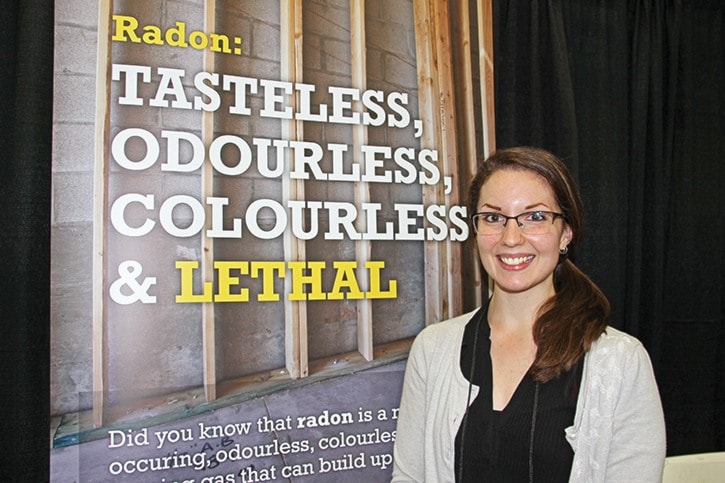This fall and winter, Colwood homeowners can be part of research into the presence of an environmental carcinogen that has become a target for two high-profile enemies of cancer.
The Canadian Cancer Society will be looking for residents to allow their homes to be tested for radon, a naturally occurring, odourless and colourless radioactive gas created by the decay of underground uranium. Long-term exposure to elevated levels of this gas, such as in a contained space, has been linked to lung cancer, according to the two bodies. As such the Society, backed with ongoing research by Health Canada, is looking to broaden its base of data and raise awareness about the presence of radon in homes.
“Health Canada did a cross-country survey (in 2012) of radon levels indoors and they found that no home is completely free of (the gas),” said Christina McLean, health promotion co-ordinator with the Canadian Cancer Society. “So it is present, but the only way to know is to test for it to see how much there is.”
Colwood is one of three areas on the Island that will be included in this latest round of testing, along with Gordon Head and Nanaimo. The detector, provided free to test subjects, is fairly small and is designed to sit on a shelf or hang from the ceiling where it won’t be disturbed for a period of three months or so.
McLean said testing for radon is better to be done in the cooler months when windows are more likely to be closed. In the warmer months, air tends to circulate more in a home and disperse any gases that may be present, she added.
While not part of this specific project, commercial buildings also have potential for elevated levels of radon. The gas can seep into a home or building through any place in contact with or close to the soil. Small cracks in foundations or gaps around service pipes, as well as floor drains and sumps, are potential entry points.
Exposure to radon is a leading cause of lung cancer among uranium miners, and Canadian Cancer Society testing in B.C. has determined that levels tended to be elevated in Northern B.C. and Interior communities. Testing on the Island has been limited to date, McLean said.
As for the numbers, the Society states that long-term exposure to radon is the second-leading cause of lung cancer after smoking, and is the leading cause among non-smokers. It estimates that 3,200 radon-related lung cancer deaths occur in Canada each year. That number includes smokers for whom the incidence of lung cancer is increased with long-term exposure to radon.
Mitigation measures are available for homes and buildings with elevated levels of the gas, and certified professionals are available to help home and building owners address the problem. For more information on radon, visit cancer.ca, radonaware.ca or Health Canada at bit.ly/29i0vyd.
For people who’d like to start measuring radon in their home now, detectors are widely available at hardware and home improvement stores for as little as $15 to $20, as well as online. Cost depends on whether the test is short-term or longer-term.
To sign up for a test kit in Colwood, send an email to radon.colwood@bc.cancer.ca or call McLean at 250-414-4257.
editor@goldstreamgazette.com
